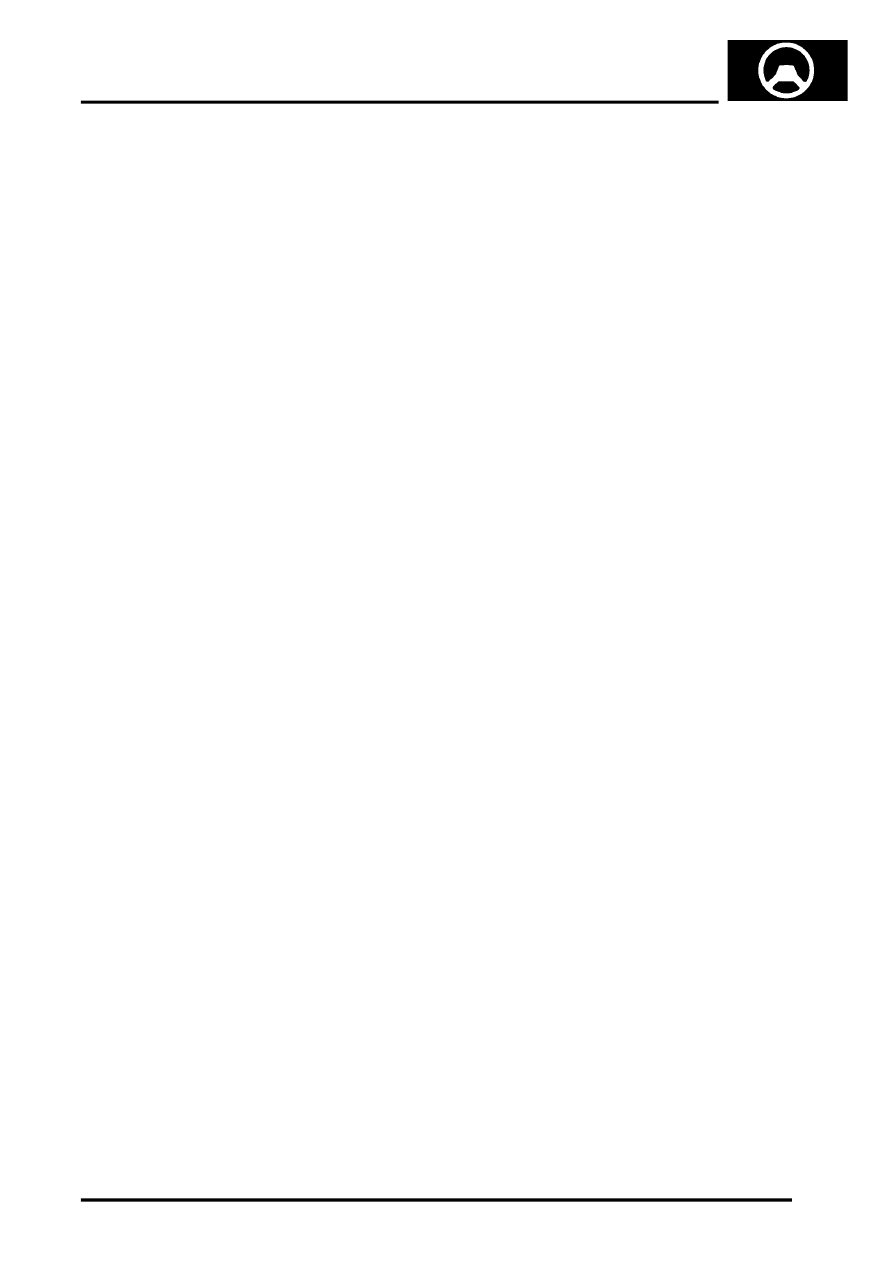Freelander System Description and Operation

STEERING
DESCRIPTION AND OPERATION
57-3
1 Locknut
2 Steering wheel
3 Upper shaft
4 'U' Clip (2 off)
5 'Curling' plate (2 off)
6 Shear bolt (2 off)
7 Clamp plate
8 Lower mounting
9 Upper column tube
10 Lower column tube
11 Universal joint
12 Intermediate shaft
13 Universal joint
14 Adaptor
15 Clamp bolt
16 Locknut – mounting (2 off)
17 Upper mounting
18 Column adjuster
19 Light ring – ignition switch
20 Transponder coil
21 Steering column lock assembly
22 Lock bolt
23 Ignition switch
24 Lower shaft
25 Injection moulded shear pins
26 Lock collar
27 Wave form interference ring
The steering column design incorporates an energy absorbing mechanism to reduce driver impact loads in the event
of a collision. The column is mounted on four captive studs which are located in an extension to the bulkhead. The
two lower mountings are fixed and cannot move when loads are applied to them. The upper mounting is designed to
disengage or deform when a load is applied, allowing the column to collapse in the event of an accident. The steering
column is adjustable to allow the steering wheel to be moved vertically up or down to the desired position. The steering
column is not serviceable and must be replaced as a complete assembly if necessary.
The upper column tube is telescopic and can slide over the lower column tube. The upper column tube provides for
the location of the steering lock and ignition switch and also the steering switch gear and a rotary coupler. The rotary
coupler provides the electrical connection for the steering wheel mounted airbag and the switches for the horn and,
where fitted, In-Car Entertainment (ICE) and cruise control.
The central shaft comprises of two parts and is located in bearings in the upper and lower column tubes. The upper
shaft is located inside the lower shaft. Mating cross holes in each shaft are connected by nylon injection moulded
shear pins.
The upper shaft is splined to accept the steering wheel. The lower shaft is connected by a universal joint to the
intermediate shaft. A second universal joint on the opposite end of the intermediate shaft is attached to a split adaptor.
The adaptor is splined and mates with the splined input shaft from the steering rack.
The upper mounting bracket has two open slots with a PTFE coated, metal 'U' clip over each slot. Two soft metal
'curling' plates are riveted to the mounting bracket and cover the slots.
The mounting studs pass through the 'U' clips and the curling plates. The lock nuts that retain the upper mountings to
the bulkhead extension are tightened to between 12 and 15 Nm. This torque figure controls the breakout load required
to move the upper mounting brackets from the studs in the bulkhead extension and is critical to the crash performance
of the column.
Energy absorption is achieved by the following mechanism: When an axial load is applied to the steering column, the
mounting bracket deforms or slides out of the 'U' clips and the curling plates deform. The 'U' clips remain captive on
the studs When the column mounting moves, the upper column tube slides on the lower column tube and allows
approximately 63 mm (2.5 in.) maximum of axial movement. The nylon shear pins holding the upper and lower shafts
together shear, allowing the central shaft to telescope the same amount as the column tubes.
